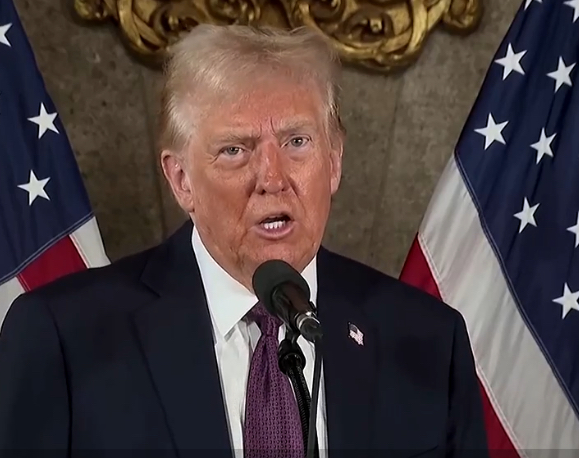
President Trump signed an executive order on Monday requiring the federal government to change the name of the Gulf of Mexico to the “Gulf of America” on official maps – a change that could take months to enact and may or may not be immediately reflected on the digital maps Americans use daily.
“The Gulf of America – which has a beautiful ring,” Trump said at a news conference at Mar-a-Lago on January 7. “The Gulf of America, what a beautiful name and it’s appropriate.”
The Gulf of Mexico has been so named at least since the late 1600s, when it was used to describe the body of water that’s bordered to the north by the United States’ southern coast, from Texas to Florida. It also wraps around Mexico’s Yucatan Peninsula.
It is the ninth largest body of water in the world, according to the National Parks Service.
Roughly the size of Alaska, it covers more than 615,000 square miles and is almost a thousand miles wide east to west and 660 miles wide north to south.
The Gulf’s shoreline is about 3,540 miles ‒ more than half of it bordering Mexico’s coast, according to the U.S. Fish and Wildlife Service, although that does not account for the myriad bays and inlets.
According to federal officials, over the last six centuries, the gulf also been known as the Golfo de Nueva España (The Gulf of New Spain) and Mar Di Florida (the Florida Sea), among others, reflecting its long-contested history between France, Spain and other European countries as they colonized the New World.
Who’s in charge of renaming the Gulf?
Renaming geographical place names is the work the U.S. Board on Geographic Names. The federal office has the power to rename geographic places within the United States.
“The BGN is responsible by law for standardizing geographic names throughout the federal government and discourages name changes unless there is a compelling reason,” the Board of Geographic Names says on its website. “Further, changing an existing name merely to correct or re-establish historical usage should not be a primary reason to change a name.”
Those changes would not necessarily be binding on the states bordering the gulf or for other countries. But at least one state has already embraced it.
In a state of emergency declaration Tuesday about cold weather there, Florida Governor Ron DeSantis said, “Whereas an area of low pressure moving across the Gulf of America, interacting with Arctic air, will bring widespread impactful weather to North Florida beginning Tuesday.”






